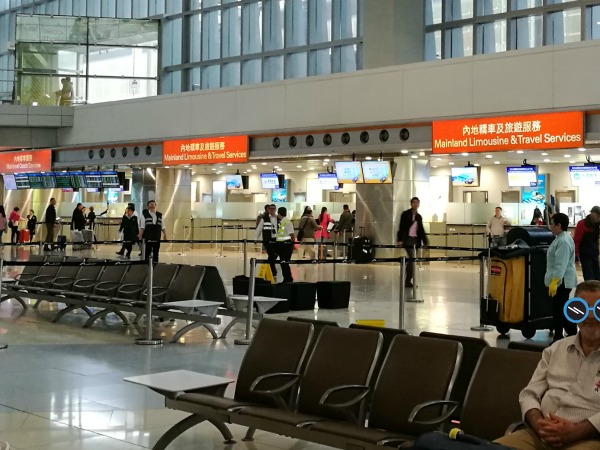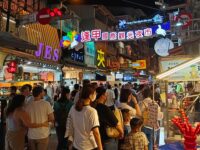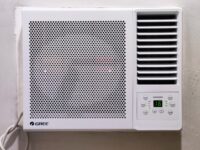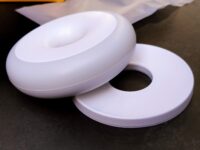If, for some reason, you have to go to Shenzhen, China right away after landing at Hong Kong International Airport, it’s actually quite easy.
GETTING A VAN TO SHENZHEN FROM THE HONG KONG AIRPORT
For us, the simplest way to get to Shenzhen from the Hong Kong airport is by catching a van. There’s a longer, more roundabout way, where you take the Airport Express to Kowloon, then find your way to the Hung Hom MTR station and take the MTR directly to Shenhen (Lo Wu station), but this way is just too much trouble.
There are 2 border crossings we usually use between Hong Kong and Shenzhen:
- Huanggang / Lok Ma Chau – the Shenzhen side is called Huanggang, the HK side is called Lok Ma Chau; this border crossing is open 24 hours – no MTR connection to Hong Kong
- Luohu, also called Lo wu – Shenzhen side is called Luohu, HK side is called Lo Wu – easy MTR connection to Hung Hom Station in Kowloon, Hong Kong
From the Hong Kong airport, it’s just best to catch a van to Shenzhen. After reaching the main Arrivals area in Hong Kong, just follow the signs that say something like “to Mainland China”. Go down one floor.
Then you’ll see a big area with booths selling tickets to China – the area is labeled Mainland Limousine & Travel Services.
We got a van to Huanggang. Huanggang is the only destination they offer. Tickets cost HK$130-150 per person. After paying, they give us stickers to place on our chest so that they can easily identify us. We didn’t have to wait long before a van was ready to leave, and they led us to the gate where the van was waiting.
This is what the van looks like:
What’s nice about it is that unlike FX vans in Manila, the vans used here were relatively new and they didn’t cram us like sardines! The van was full, but not jam-packed. 2 people to a row instead of the usual 4 that they do here in Manila FXs. We had space and it was a comfortable ride.
CROSSING THE BORDER
The drive only took around 30 minutes.
Hong Kong Side
For the Hong Kong immigration (leaving Hong Kong), the van passed a drive-through immigration window where we handed our passports to the immigration officer. The place just looked like a toll booth. She handed the passports back, and we were through. The van headed for Huanggang.
Shenzhen / China Side (Huanggang Border Crossing)
First of all, you must have a Chinese visa. We got ours from the Chinese Embassy in Makati weeks before we left for our trip.
The van dropped us off in front of the Huanggang border crossing main building. There were signs saying that we couldn’t take pictures, so I don’t have any photos.
We entered the building, there was the usual line of immigration booths. But before we could line up, we had to fill out a form and do some finger scanning. There are machines that look like little ATMs where you are supposed to scan your fingerprints. It’s very DIY. It was also a little scary in the sense that it really makes it clear that we were entering a state where they take keeping track of people seriously.
After going through Immigration, we went out of the building and we were officially in China.
The Bad About Huanggang
The thing that I hate about crossing through Huanggang is actually that damn footbridge. I call it the footbridge of torture.
We were taking a taxi to our hotel. As usual, I looked for our hotel on Google Maps, made sure the hotel’s Chinese name was visible, and took screenshots. This is how I tell taxi drivers where I need to go.
After getting out of the Huanggang building, if you’re taking a taxi, there is no other option but to go to the taxi stand on the other side of the wide road. And to do that, we had to take the footbridge. With all our heavy luggage.
Normally, the footbridge would be fine. It’s an old style concrete footbridge with small steps and a narrow ramp in the middle. But it is a big-ass footbridge! It’s really not the best place to be dragging heavy luggage. Manually. There were no escalators nor elevators that I could see.
I don’t know why they couldn’t have placed the taxi stand nearer the building exit so people wouldn’t have to drag, pull and carry their heavy luggage up and down several flights of stairs! I was worried that I would get off balance and careen down the steps. If not me myself, then I was worried for my luggage, my laptop, my DSLR camera, you get the picture… And it’s not just me, what of older travelers who are not physically capable of doing this?
There are some men who will try to sell you on taking their cabs, and they will attempt to help you with your luggage. They position themselves right outside the door of the Huanggang building and will try to grab your luggage from you so you’ll be forced to take their transportation service or whatever else they are offering. Don’t let them do this. Just ignore them. Shenzhen is a new, fast-growing city, and because of that, it attracts all sorts of people from all over China. Shenzhen is quite known in China as a “scammy” city, so just avoid these kinds of things – you don’t know if they are scams, and it’s better not to find out.
So, I guess if you really must cross through Huanggang, just make sure you pack light enough that you can carry your luggage over flights of stairs.
Taxis in Shenzhen
The 2 taxi rides we took in Shenzhen were okay. The drivers went by the meter, and they even gave us change. They didn’t take the long way to our destination, as far as I could tell – I had studied the Google Maps before going on the trip. However, the roads in Shenzhen are long and far apart – most look like freeways and sometimes the taxis need to take exit ramps to go to our actual destination. It’s not as direct like take a left here, take a right there, etc…
Flag down is RMB 10.
Another good thing about Shenzhen taxis is that they don’t charge extra for luggage! In Hong Kong, taxis charge extra for each piece of luggage you put in the trunk.
Unfortunately, most taxi drivers barely speak any English so it’s better if you speak Mandarin, or you can just keep showing Google Map screenshots… 🙂
Shenzhen is a very, very big city. Research your destination well before going to make sure you’re crossing borders in the right place. You might think a place looks near on the map, but it’s actually very far in real life. Shenzhen’s total size is almost 800 sq miles. In contrast, the whole of Metro Manila is only 240 sq miles. So Shenzhen is 3x the size of the whole of Metro Manila!



















